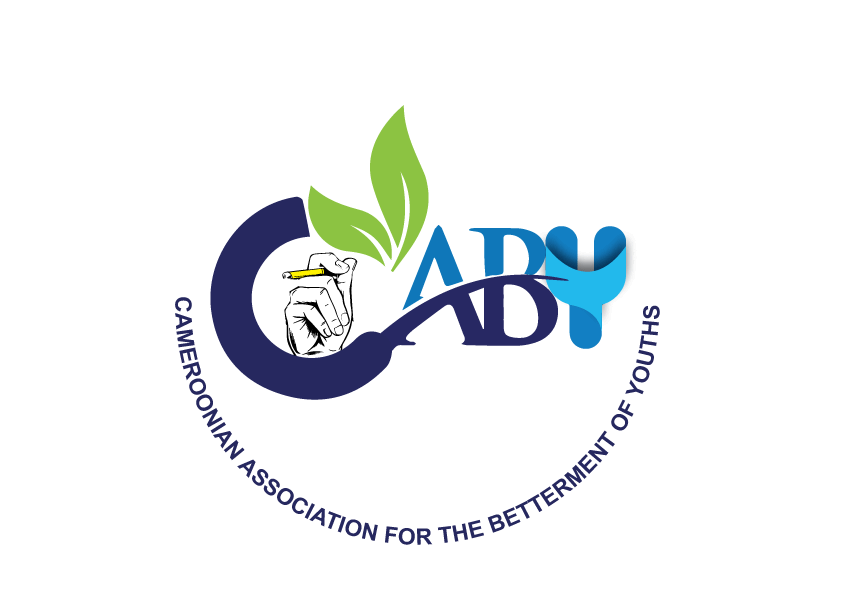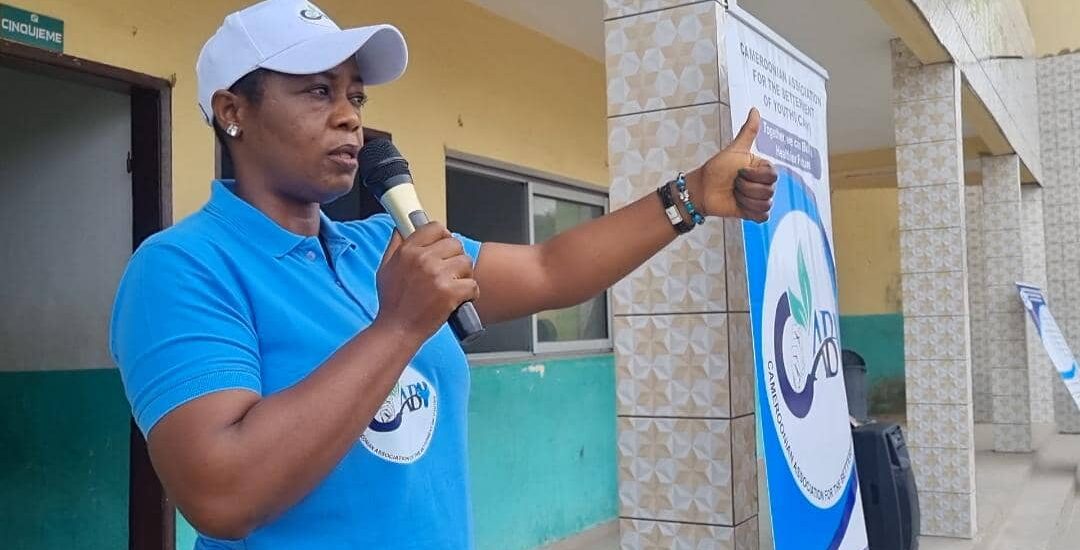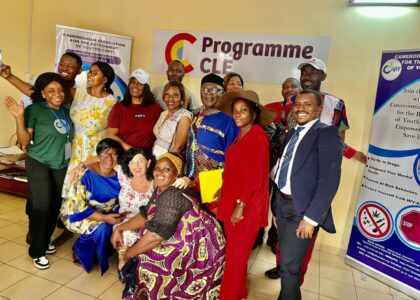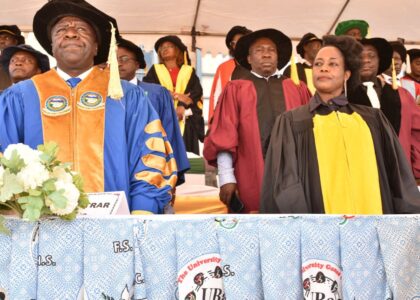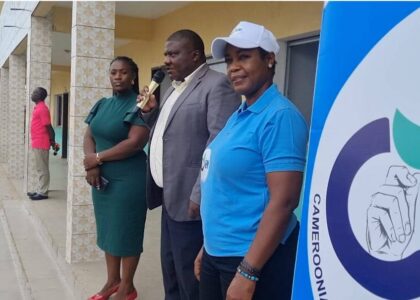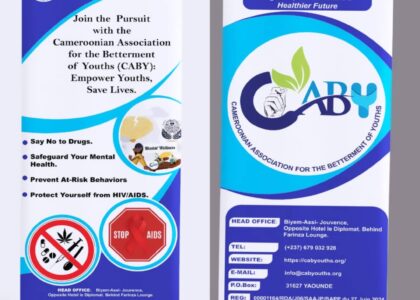By SHARILA SHUKA BALON EPSE BERKA DZEKEM CEO, Cameroonian Association for the Betterment of Youths (CABY) Sunday the 7th of September 2025.
Abstract
In African cities, roads are more than just infrastructures that facilitate movement. Anthropologically, urban spaces are usually studied as sites where modernity, tradition, and social life intersect (Geschiere & Nyamnjoh, 1998). This article explores anthropological dimensions of road maintenance and traffic congestion in certain areas of Yaoundé, the capital city of Cameroon. Drawing on the structural functionalist perspective, it argues that roads are not merely physical infrastructures but vital social spaces where mobility, economic activities, and culture – everyday lifestyle – intersect. Current practices of road maintenance and road rehabilitation – characterized by prolonged delays, dog-up yet unfinished patches, and closures of strategic entry and exit points – have generated ripple effects of disruptions that affect and reshape urban livelihood beyond transportation. Apart from economic activities, these disruptions affect everyday life – from the operations of travel agencies and street vendors/hawkers to the productivity of workers. With the school resumption period already at hand, these challenges are compounded, threatening to exacerbate inequalities and further strain social order. Hence analysis shows that urban road is not merely a site of technical intervention but equally, a locus of social reproduction, where circulation interruptions threaten the functioning of the broader social system. The article concludes with proposals for policy intervention and community adaptation strategies.
Introduction
Africa urban spaces are often studied anthropologically as sites where modernity, tradition, and social life intersect (Geschiere & Nyamnjoh, 1998). Yaoundé, a rapidly expanding city with2over four million inhabitants (Tokam, & Ouro-Djobo, 2025; Kemajou, Chenal, & Ndam, 2024), provides a rich ground for understanding how infrastructure and human behavior interact. Mobility in these cities is never purely technical, it is social, symbolic, and embedded in everyday struggles (Sietchiping, R., Permezel, M. J., & Ngomsi, C. 2012, Adey, 2006; Mbembe & Nuttall, 2004). Roads in Yaoundé, like in many cities, serve not only as avenues of circulation but as spaces of social exchange, transience, and livelihood (Takabvirwa, 2024; Werthmann, 2022; Jónsson, 2024; ). However, current road maintenance and rehabilitation practices reveal critical fractures in the balance between technical development and social orders. The most visible problems of some of the roads under maintenance or rehabilitation across the city has been the digging of patches which are left unattended for extended periods, creating diverse hazards. Similarly, the introduction of barricades on strategic roads, especially those hosting major travel agencies, has moved pick-up and drop-off activities to makeshift and unregulated points (Azcárate, 2020; Jacobs, 2023). There is insensitivity work plan with regards to areas like markets, churches, schools (Thomas, 2022; Offong, Asangausung, Udom, & Solomon). This practice reinforces traffic congestion. These changes occur against the backdrop of an imminent school resumption period, when children, workers, traders, and society rely heavily on predictable mobility.
The Problem
Urban infrastructural works of road maintenance and rehabilitation are expected to facilitate mobility, enforce connectivity and improve on the culture of cities (Chaarawi, Mohamed, & Nasr, 2025; Rui, & Othengrafen, 2023; Campisi, Severino, Al-Rashid, & Pau, 2021). However, these practices in Yaoundé tend to follow a pattern where some roads works are done during the rainy season, roads are dug with limited systematic timelines for completion (users don’t know when these contracts effectively start and the effective dates of completion). In many cases, the rain slows down rehabilitation and maintenance processes, patches remain open for long periods, generating both physical and social obstacles. Furthermore, roadblocks at critical entry and exit points – where there are clusters most travel agencies – disrupt established systems of circulation planning. Agencies for instance, deprived of structured alternatives tend to create ad-hoc spaces for customer pickup and drop-off spilling into already crowded streets. These situational responses challenge traffic flow, cause congestion, reduce efficiency, and impose daily stress on commuters. The absence of regulated temporary stations for these agencies for instance, reflects the ongoing challenges of aligning urban planning with social3needs (Yahia, Chohan, Arar, & Awad, 2025; Dingil, 2025; Venter, Mahendra, & Hidalgo, 2019).
Explanations through Structural Functionalism
Structural functionalism theory holds that society is a system wherein different parts function to maintain equilibrium (Radcliffe-Brown, 1952; Parsons, 1951). Within this framework therefore, roads are not mere physical entities but social organs whose proper functioning foster mobility, education, commerce, and social relations.When certain road intervention practices interfere with traffic patterns without offering timely solutions, it leads to a dysfunction (Musa, Malami, Alanazi, Ounaies, Alshammari, & Haruna, 2023) – the equilibrium of the social system is destabilized (Kuma, Yemelong, & Acha, 2025). With this, workers endure delays that undermine productivity and heighten workplace stress. Street vendors/hawkers lose prime spaces for trade as mobility patterns shift. Travel agencies, unable to operate from formal stations, improvise roadside locations that obstruct circulation (Nnoko, 2025). The police are overwhelmed by the disorder, leading to strained governance and reduced public trust (Chianebeng, Doumtsop, & Bate, 2025). Other aspects of culture such as socialising is disturbed as people feel reluctant facing the congested roads. Projections indicate that school children risk facing longer commutes, which may strain punctuality and academic focus (Nnoko, 2025).This disruption creates a chain effect where a blocked road does not only slow traffic but also alters economic flows, daily routines, and social interactions (Styer, Tunstall, Landis, & Grenfell, 2024; Faheem, Shorbagy, & Gabr, 2024). The diversion of vehicles to streets, reinforces congestion, noise and accidents around residential neighbourhoods (Tabi & Tiafack, 2024). Delivery drivers for commercial businesses face delays that ripple into shortages in shops and markets (Olalekan Ahmed, 2025). Patients in need of urgent medical attention are trapped in jams, illustrating how infrastructural dysfunction can become a public health risk (Tabi & Tiafack, 2024). Herewith, roads are part of the city’s circulatory system, and their dysfunction disrupts the dynamics of urban life (Jowell, Veidis, Alani, & Barry, 2025; Singer, 2025).
What are the effects of this dysfunction on urban life?
Culturally, the impact of these interruptions is not uniform but stratified across different social categories:
1. Effects of on mobility.
The most immediate effect of prolonged roadworks rests on mobility. Yaoundé’s roads already contend with dense traffic due to limited expansion capacity and rising urban populations. The digging of patches without timely completion reduces usable road space, leading to extended travel times and heightened stress for commuters. Motorbike taxis, which usually serve as alternative transport in congested cities, become overburdened and contribute to increased risks of accidents as they manoeuvre through makeshift routes (Kouomoun, Ndam, Chenal, & Kemajou, 2025; Nogueira, 2022; Ojha, 2021). The breakdown of road functionality disrupts the smooth circulation of people, goods, and services, thereby challenging the city’s capacity to perform its daily functions. As a result, social life is affected, as people avoid social gatherings – usually meant to reinforce kinship and community cohesion – that require navigating congested roads.
2. Consequences on economic activities.
The economic effects of road maintenance and rehabilitation are profound. Travel agencies displaced from their usual terminals now resort to makeshift drop-off and pickup points, often located directly on the main roads (Asubonteng, 2025; Nogueira, 2022). This practice blocks lanes, slows circulation, and reinforces traffic congestion (Subair, Ibitoye, & Kuranga, 2024;). Informal traders, particularly roadside vendors/hawkers who depend on the flow of moving traffic for sales, experience shifting fortunes (Bhagat, 2025; Mim, 2024). While some profit from prolonged traffic jams, others are displaced by diversions that reroute potential customers away from their zones of activity. Formal businesses, meanwhile, suffer delays in the delivery of goods, increased transportation costs, and reduced productivity. Thus, the roadworks creat a paradox where some micro-economies emerge from congestion, broader economic systems endure significant inefficiencies (Zhang, 2020).
3. The educational dimension: projecting the situation
The approaching school resumption period sharpens the urgency of these challenges. During normal conditions, education in Cameroon faces structural obstacles such as overcrowded classrooms, insufficient infrastructure, and limited access to affordable transportation (Mofako 2025; Ndindeng, 2024; Nana Djomo, & Epo, 2022). The disruptions caused by unfinished roadworks can compound existing challenges. They can generate unintended consequences on students’ social and academic lives – increased commuting delays, fatigue, and reduced access to school facilities. Idle time created by traffic congestion and detours will expose students to informal and unregulated spaces where drug circulation for instance is prevalent (Hannerz, E., & Bengtsen, 2024; Otieno, 2021; ). These dynamics collectively reinforce the vulnerability of students to drug consumption as a coping mechanism for stress, frustration, and peer influence. Parents may find it harder to drop off and pick up children, especially those in nursery and primary levels who require close supervision. Secondary and university students risk lateness, fatigue, and reduced study time as hours are lost in traffic (Nathaniel, & Obaro, 2023; Mfungo, 2020; David, Temba, & Matondo, 2025). Teachers and school administrators, too, become victims of the gridlock, impairing the punctuality and efficiency of education delivery. Over time, these challenges risk exacerbating educational inequalities, as children from wealthier families may secure alternative transport while those from less privileged backgrounds face declining attendance and performance (Hutchings, 2021; Holloway, & Kirby, 2020; Taylor, & Cantwell, 2019; Tabe, & Emekako, 2025). Hence projections of this current disorder on school children and students show they may face exhaustion and lateness as they spend more time commuting.
4. Other Users in the web
Beyond commuters, workers, traders, and students, other categories of users are caught in this web (Thomas, 2020). Delivery agents and logistics companies face rising costs and delayed services. Emergency services such as fire brigades are slowed in their response, threatening lives. Religious communities, which depend on timely mobility for worship gatherings, weddings, and funerals, face disrupted schedules. Even leisure spaces such as markets are indirectly affected as reduced mobility limits patronage. This interconnectedness underscores the structural functionalist point – when one subsystem (roads) falters, a ripple effect destabilizes the entire social body (Hartley, & Kuecker, 2022). The chain effects illustrated indicate a key anthropological insight where urban infrastructure is not separate from social life but rather deeply constitutive of it. Thus, effects on mobility, economic activity, and education reveal how disruptions in one structural component unsettles the functional balance of urban life. What emerges is a crisis of coordination, where the absence of planning in roadworks destabilizes the broader system of social reproduction.
Proposed solutions
Several solutions can be put in place to ameliorate the situation at hand. However, the following proposals have been constructed to match what was seen in the field. First and foremost, authorities in charge should establish clear timelines for projects and enforce accountability among contractors to avoid prolonged delays. Urban works should be sensitive not only to traffic flow but also to the cultural and social dynamics that define community life. In many African cities for instance, spaces such as markets, schools, churches, and mosques are not merely physical infrastructures but centers that strengthen social interaction, identity, and collective belonging. When road or construction projects overlook these cultural calendars, they risk producing more than congestion – disrupt the quint essence of social cohesion. To avoid this, planning should align with communal time. Case in point, road works or construction near mosques should deliberately exclude prayer time on Fridays, since prayers gather large crowds. In like manner, Sunday prayer schedules should be consulted and respected around churches, where worship goes beyond spirituality to reinforce kinship and community solidarity.Markets embody the economic foundation of the society and serve as spaces of daily negotiation and survival. They can be managed by scheduling works at night when activity is minimal. Similarly, recognizing schools as spaces of cultural formation and transformation – spaces where future generations are shaped – avoiding resumption periods during scheduling of work would ensure that the city’s most vulnerable groups are not disproportionately affected. Hence, works should avoid peak hours and possibly take place during holidays or late at night till early morning.To ensure equilibrium, urban governance should treat road maintenance and rehabilitation not only as a technical activity but as a social intervention. Timely completion of projects should be prioritized to minimize long-term disruptions. In cases where road closures are inevitable, concerned authorities could create structured, temporary spaces for displaced travel agencies. This will prevent them from crowding roadside spaces as noticed around the concerned neighbourhood.Beyond timing, solutions should adopt a phased and participatory approach. If stakeholders such as religious leaders, market associations, school authorities and other road users are consulted, it will not only improve coordination but would also anchor maintenance and rehabilitation within the lived realities of the population.Early and clear communication through radios and signposts/billboards about project timelines and alternative routes –it is imperative that road works agencies refurbish alternative routes and redirection strategies prior to the commencement of works – will reduce uncertainty and foster cooperation. This will also reduce frustration and build trust.
Finally, the Public Command in Cameroon (Decree No. Decree No.2018/366 of 20 June 2018 having to do with the Public Contracts Code) provides that most contracts for the year should be awarded latest the end of April of which I will propose that contracts for road maintenance and rehabilitation should be awarded during the rainy season and executed during the dry season.
Conclusion
Roads in Yaoundé are not inert infrastructures but focal social spaces that sustain the city’s social order. Road maintenance and rehabilitation projects, when poorly coordinated, disrupt the delicate balance of daily life, producing effects that spiral across education (Victor, 2024), work, commerce, health, and culture. Through a structural functionalist lens, these disruptions can be seen as dysfunctions that threaten the equilibrium of urban society (Izadi, A., Mohammadi, Nasekhian, & Memar, 2020). Reframing road governance as both infrastructural and social responsibility offers a pathway toward solutions that are not only technical but also socially responsive. By embedding planning into the cultural logic of everyday life, development projects can proceed without alienating the very communities they seek to serve. Through this integrated approach, Yaoundé can ensure that its roads remain nerves of both mobility and social vitality.
References
1. Adey, P. (2006). If mobility is everything then it is nothing: Towards a relationalpolitics of (im)mobilities. Mobilities, 1(1), 75–94.2. Andei, M., County, M., & Dennis, B. W. (2016). Locational Factors for Transit ServiceCentres on National Highways: A Case Study of Mtito Andei, Makueni County.University of Nairobi.3. Asubonteng, A. A. (2025). Assessing Urban Infrastructure Design, Mobility Patternsand Risk of Injury Among Female Head Porters in the CBD of Kumasi (Doctoraldissertation, University of Cape Coast).4. Azcárate, M. C. (2020). Stuck with tourism: Space, power, and labor in contemporaryYucatán. University of California Press.
References1. Adey, P. (2006). If mobility is everything then it is nothing: Towards a relationalpolitics of (im)mobilities. Mobilities, 1(1), 75–94.2. Andei, M., County, M., & Dennis, B. W. (2016). Locational Factors for Transit ServiceCentres on National Highways: A Case Study of Mtito Andei, Makueni County.University of Nairobi.3. Asubonteng, A. A. (2025). Assessing Urban Infrastructure Design, Mobility Patternsand Risk of Injury Among Female Head Porters in the CBD of Kumasi (Doctoraldissertation, University of Cape Coast).4. Azcárate, M. C. (2020). Stuck with tourism: Space, power, and labor in contemporaryYucatán. University of California Press.
18. Ferguson, J. (1999). Expectations of Modernity: Myths and Meanings of Urban Lifeon the Zambian Copperbelt. Berkeley: University of California Press.19. Geschiere, P., & Nyamnjoh, F. (1998). Capitalism and Autochthony: The Seesaw ofMobility and Belonging. Public Culture, 12(2), 423–452.20. Hannerz, E., & Bengtsen, P. (Eds.). (2024). Urban Creativity: Essays on interventionsin public space. SCB Distributors.21. Hartley, K., & Kuecker, G. D. (2022). Disrupted governance: Towards a new policyscience. Cambridge University Press.22. Holloway, S. L., & Kirby, P. (2020). Neoliberalising education: New geographies ofprivate tuition, class privilege, and minority ethnic advancement. Antipode, 52(1), 164-184.23. Hutchings, M. (2021). Inequality, social mobility and the ‘glass floor’: How moreaffluent parents secure educational advantage for their children. In Educationalresearch for social justice: evidence and practice from the UK (pp. 137-169). Cham:Springer International Publishing.24. Izadi, A., Mohammadi, M., Nasekhian, S., & Memar, S. (2020). Structuralfunctionalism, social sustainability and the historic environment: a role for theory inurban regeneration. The historic environment: Policy & practice, 11(2-3), 158-180.25. Jacobs, R. (2023). Institutional barriers to an intermodal integrated public transportsystem in the City of Cape Town.26. Jónsson, G. (2024). Urban Displacement and Trade in a Senegalese Market: Ananthropology of endings (p. 248). UCL Press.27. Jowell, A., Veidis, E., Alani, O., & Barry, M. (2025). Cities, health, and equity. In TheElgar Companion to Health and the Sustainable Development Goals (pp. 274-297).Edward Elgar Publishing.28. Kemajou, A., Chenal, J., & Ndam, S. (2024). Aspirations for Ownership andDifferentiation of Residential Strategies in the Urban Peripheries of Sub-SaharanAfrica: The Cases of Yaoundé and Lomé. Afrique (s) en mouvement, 8(2), 60-74.29. Kouomoun, A., Ndam, S., Chenal, J., & Kemajou, A. (2025). Navigating Risks andRealities: Understanding Motorbike Taxi Usage and Safety Strategies in Yaoundé andDouala (Cameroon). Safety, 11(2), 61.30. Kuma, C. J., Yemelong, N. T., & Acha, M. E. (2025). Urban Bus Terminal Operationsin Sub-Saharan Africa: Challenges and Perspectives from Bamenda City-Cameroon.Glob Acad J Humanit Soc Sci, 7.
1. Malinowski, B. (1944). A Scientific Theory of Culture and Other Essays. Chapel Hill:University of North Carolina Press.32. Mbembe, A. (2001). On the Postcolony. Berkeley: University of California Press.33. Mbembe, A., & Nuttall, S. (2004). Writing the World from an African Metropolis.Public Culture, 16(3), 347–372.34. Meyer, M. D. (2016). Transportation planning handbook. John Wiley & Sons.35. Mfungo, B. (2020). Assessing the Effect of Traffic Congestion on EducationPerformance of Secondary Schools in Dar es Salaam, Ilala, Tanzania (Doctoraldissertation, The Open University of Tanzania).36. Mim, N. J. (2024). Sacrificing Cities Modernity, Religions, and Urban SpatialDynamics in Dhaka, Bangladesh. Harvard University.37. Mofako Rebecca, E. (2025). Rural Revitalization in Cameroon: Opportunities andChallenges. Rural Revitalization in Cameroon: Opportunities and Challenges (March13, 2025).38. Musa, A. A., Malami, S. I., Alanazi, F., Ounaies, W., Alshammari, M., & Haruna, S. I.(2023). Sustainable traffic management for smart cities using internet-of-thingsoriented intelligent transportation systems (ITS): challenges and recommendations.Sustainability, 15(13), 9859.39. Nana Djomo, J. M., & Epo, B. N. (2022). Transport poverty, distance covered to accessto basic infrastructures and modal choice in urban cities in Cameroon. In Transportand mobility futures in urban Africa. Cham: Springer International Publishing. (pp.129-150).40. Nathaniel, O., & Obaro, O. V. (2023). Managing Students’ Lateness in SecondarySchools in Bayelsa State: The Administrators’ Headache and Solutions. Journal ofEducation in Developing Areas, 31(2), 62-71.41. Ndi, C. D. B., Nouaye, B., Mbessa, M., & Friedman, R. D. (2022). Geotechnicalcharacterization of an innovative soil stabilization product (Aggrebind/Road Master)usable in the construction, rehabilitation and maintenance of road infrastructure andthe construction of social housing in Cameroon. Journal of the Cameroon Academy ofSciences, 17(3), 257-275.42. Ndindeng, A. (2024). Factors Influencing Under-Education in Cameroon: AComprehensive Analysis. African Educational Research Journal, 12(3), 182-201.43. Ngusulugh, I. B., & NGYAH, K. (2021). The State of Urban Roads and theImplications on Mobility and Economic Progress. GSJ, 9(11)
44. Nnoko, E. (2025). Impact of the modernization of Cameroon’s railway system.45. Nogueira, M. A. (Ed.). (2022). Alternative (im) mobilities. Taylor & Francis.46. Offong, S. E., Asangausung, O. S., Udom, N. S., & Solomon, E. O. MaintenanceCulture of Road Infrastructure and Socio-Economic Development in Uyo LocalGovernment Area, Akwa Ibom State, Nigeria.47. Ojha, K. N. (2021). Road safety status and some initiatives in Nepal. ITEGAM-JETIA,7(27), 20-40.48. Olalekan Ahmed, T. (2025). Exploring the Impact of Infrastructural Deficiencies onLogistics Efficiency in Nigeria.49. Otieno, I. A. (2021). Informalization and Management of Street Use in DowntownNairobi (Doctoral dissertation, University of Nairobi).50. Parsons, T. (1951). The Social System. New York: Free Press.51. Radcliffe-Brown, A. R. (1952). Structure and Function in Primitive Society. London:Cohen & West.52. Region, L. (2023). Cameroon. The Indigenous World.53. Rui, J., & Othengrafen, F. (2023). Examining the role of innovative streets in enhancingurban mobility and livability for sustainable urban transition: A review. Sustainability,15(7), 5709.54. Sheller, M., & Urry, J. (2006). The new mobilities paradigm. Environment andPlanning A, 38(2), 207–226.55. Sietchiping, R., Permezel, M. J., & Ngomsi, C. (2012). Transport and mobility in subSaharan African cities: An overview of practices, lessons and options forimprovements. Cities, 29(3), 183-189.56. Sietchiping, R., Permezel, M. J., & Ngomsi, C. (2012). Transport and mobility in subSaharan African cities: An overview of practices, lessons and options forimprovements. Cities, 29(3), 183-189.57. Singer, M. (2025). The Making of Ecosyndemics. In The Anthropology of Human andPlanetary Health: An Ecosyndemic Approach (pp. 91-133). Cham: Springer NatureSwitzerland.58. Styer, J., Tunstall, L., Landis, A., & Grenfell, J. (2024). Innovations in pavement designand engineering: A 2023 sustainability review. Heliyon, 10(13).59. Styer, J., Tunstall, L., Landis, A., & Grenfell, J. (2024). Innovations in pavement designand engineering: A 2023 sustainability review. Heliyon, 10(13)
60. Subair, S. O., Ibitoye, B. A., & Kuranga, A. T. (2024). Evaluation of Traffic Congestionin an Urban Roads: A Review. ABUAD Journal of Engineering and Applied Sciences,2(2), 1-7.61. Tabe, H. T., & Emekako, R. (2025). Navigating educational challenges amidst civilunrest: An in-depth exploration of the impact on access in the north and south-westregion of Cameroon. Perspectives in Education, 43(2), 37-53.62. Tabi, E. R., & Tiafack, O. (2024). Traffic and Mobilty Challenges in Mamfe-ManyuDivision, South West Region of Cameroon. Sch Int J Law Crime Justice, 7(4), 157-166.63. Takabvirwa, K. (2024). Make Shift: Street Vendors as Mobile Infrastructure inZimbabwe. Current Anthropology, 65(3), 393-414.64. Taylor, B. J., & Cantwell, B. (2019). Unequal higher education: Wealth, status, andstudent opportunity. Rutgers university press.65. Thomas, J. M. (2022). Making Things Happen: Community Participation and DisasterReconstruction in Pakistan (Vol. 5). Berghahn Books.66. Thomas, L. (2020). ‘I am happy just doing the work…’Commuter student engagementin the wider higher education experience. Higher Education Quarterly, 74(3), 290-303.67. Tokam, L., & Ouro-Djobo, S. S. (2025). Identification of factors influencing electricityconsumption in Yaoundé City, Cameroon. African Journal of Science, Technology,Innovation and Development, 17(2), 263-276.68. Venter, C., Mahendra, A., & Hidalgo, D. (2019). From mobility to access for all:Expanding urban transportation choices in the global south. World Resources Institute,Washington, DC, 1-48.69. Victor, S. L. (2024). Impact Analysis of Road Construction Projects on theEnvironment and Society. Jurnal Mekintek: Jurnal Mekanikal, Energi, Industri, DanTeknologi, 15(2), 67-74.70. Werthmann, K. (2022). City life in Africa: anthropological insights. Routledge.71. Wounba, J. F., Ngemoh, P. N., Fondzenyuy, S. K., & Elambo, G. N. (2023). Influenceof Road Feature Variables on Accident Rate in Cameroun. Case study: The roadtriangle Yaounde-Douala Bafoussam-Yaounde Highway. International journal ofadvance research and innovative ideas in education, 9(6), 469-488.72. Yahia, O., Chohan, A. H., Arar, M., & Awad, J. (2025). Toward Sustainable UrbanMobility: A Systematic Review of Transit-Oriented Development for the Appraisal ofDubai Metro Stations. Smart Cities, 8(1), 21
73. Zhang, J. F. (2020). Literacy in development discourse and practice: Comparativestudies in Indonesia (Doctoral dissertation, University of California, Berkeley).
